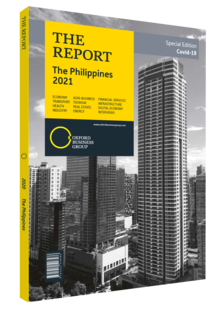Is the heightened demand for e-commerce in the Philippines here to stay?
In an effort to promote social distancing and restrict the movement of people during the Covid-19 pandemic, retailers selling hardware, clothing and electronics were mandated to close during the Philippines’ strictest lockdown phase. However, grocery and convenience stores, as well as delivery services, were deemed essential businesses and permitted to continue operations. This opened the door for e-commerce players to widen their market penetration and encouraged traditional retailers to expand into the online space. The shift was immediate. Prior to the pandemic, e-commerce accounted for 2% of total retail spending, according to a March 2020 report from payments provider PPRO; by July 2020, 78% of Filipino consumers surveyed by creative agency We Are Social and social media management platform Hootsuite had made an e-commerce purchase within the past month. Approximately 64% had used a mobile device for this purchase, above the global average of 52%. The report also found Filipinos to be the top consumers of social media worldwide – at three hours and 50 minutes per day – against a global average of two hours and 22 minutes.
Traditional Retailers Respond
As part of the evolution of Singapore-based Grab from a ride-hailing start-up to a super app, the company launched a GrabMart service for the provision of pandemic essentials in March 2020. The portal enabled traditional grocery and convenience stores to reach at-home consumers with on-demand delivery. Meanwhile, other retailers launched online stores for the first time. Japanese-headquartered apparel retailer UNIQLO, for example, launched click-and-collect and delivery options in the Philippines in July 2020.
As movement restrictions eased, many malls began to offer curbside and drive-through pick-up options, and some shopping centres launched personal shopper services. SM Aura Premier in Taguig City partnered with motorcycle ride-hailing company Angkas to combine the services with home delivery in April 2020, enabling the start-up to diversify while its transportation offerings were prohibited. The service connects customers with a personal Angkas shopper for same-day delivery.
E-Commerce Evolution
The e-commerce segment has evolved as merchandisers explore new ways to reach consumers. Singapore-headquartered e-commerce player Shopee launched an in-app, live-streaming platform in the Philippines in June 2019 through which sellers can build a following to promote their products and offer discounts to viewers.
This platform proved to be a success during the pandemic. Shopee Live recorded 30m live stream views in April 2020; 200m plays on its in-app games over the three months between February and May of that year; and an average of over 1m social interactions per day on its live chat over the latter period.
There is still greater scope for e-commerce players to collaborate with brick-and-mortar retailers to provide consumers low-cost delivery options, as has been done in other countries. Customers of e-commerce portals Lazada in Singapore and 24Catalog in Thailand can collect deliveries from 7-Eleven – a convenience store chain that had more than 2900 branches in the Philippines at the start of 2020 – at no extra charge.
Behaviour in the New Normal
The elevated rates of e-commerce usage during the pandemic look set to remain a more permanent feature of the retail landscape. According to a poll released by Visa in July 2020, 73% of Filipino consumers are likely to sustain or increase their pandemic level of online shopping once restrictions are eased. However, 37% of the same consumers reported a preference for the experience of shopping online versus in store.
As such, it is unclear whether consumers’ inclination to continue shopping online is driven by convenience, cost or lingering pandemic-related concerns. However, their intention to continue shopping online and preference for an in-store experience should signal hope for both e-commerce and brick-and-mortar retailers alike.
You have reached the limit of premium articles you can view for free.
Choose from the options below to purchase print or digital editions of our Reports. You can also purchase a website subscription giving you unlimited access to all of our Reports online for 12 months.
If you have already purchased this Report or have a website subscription, please login to continue.

